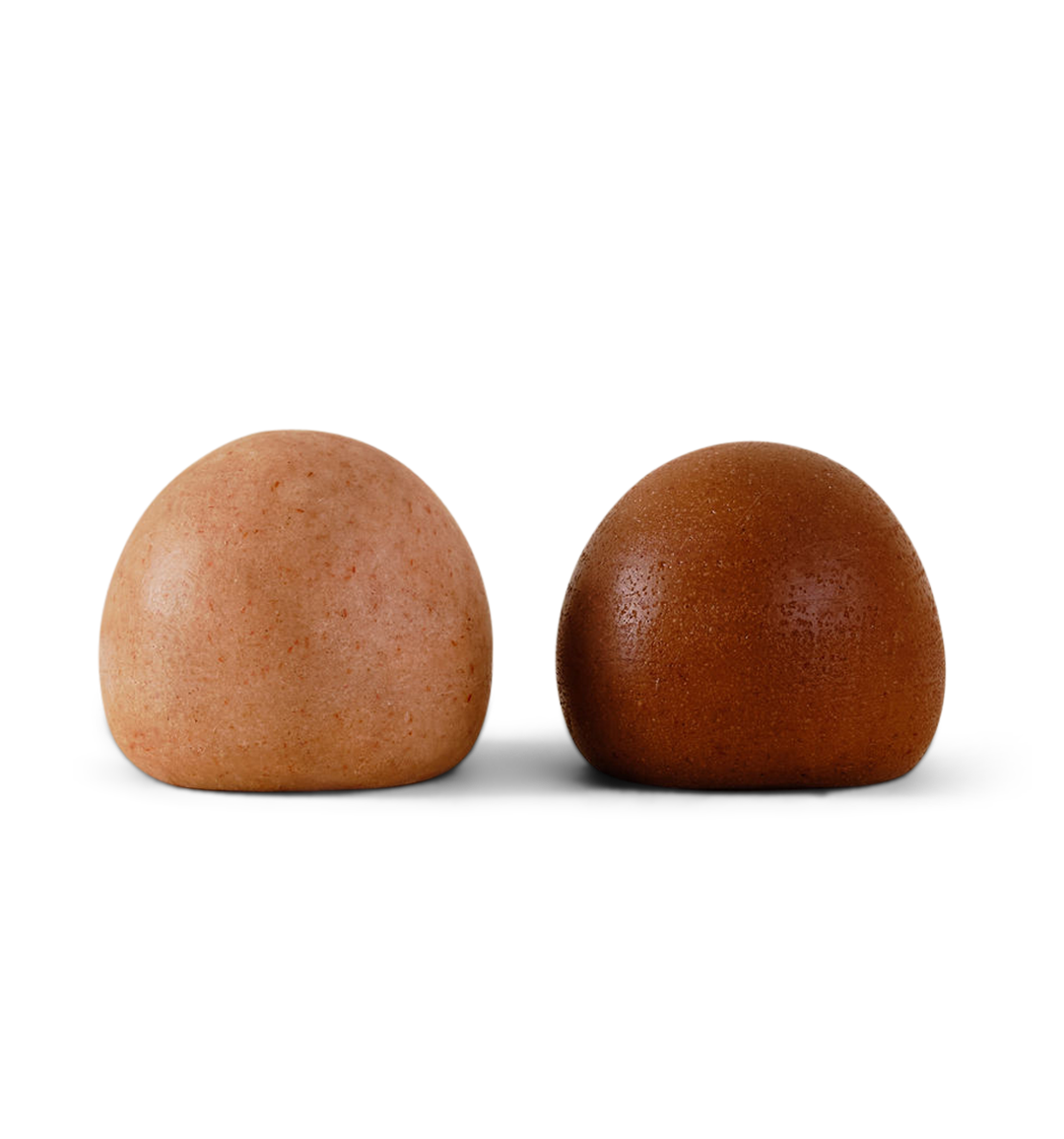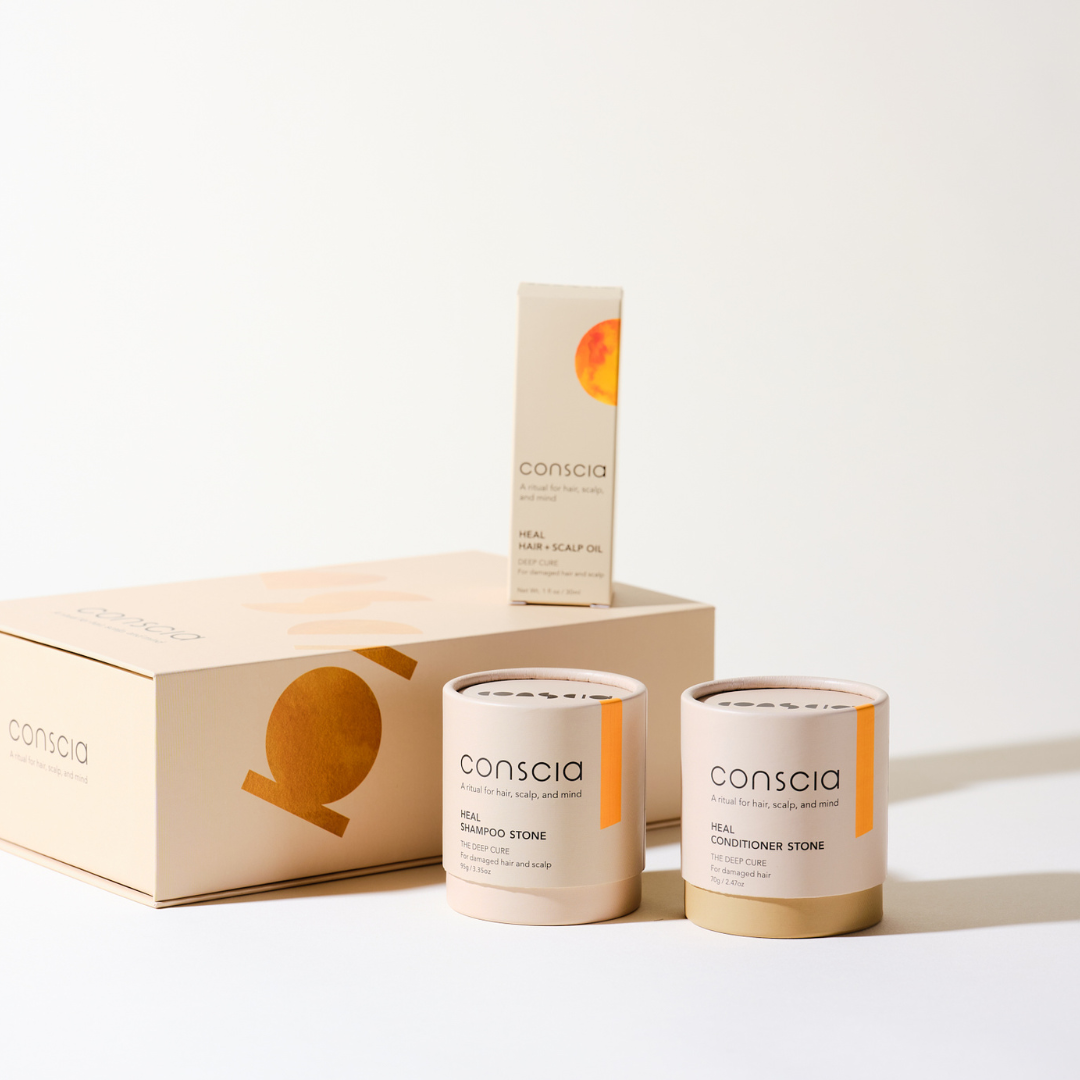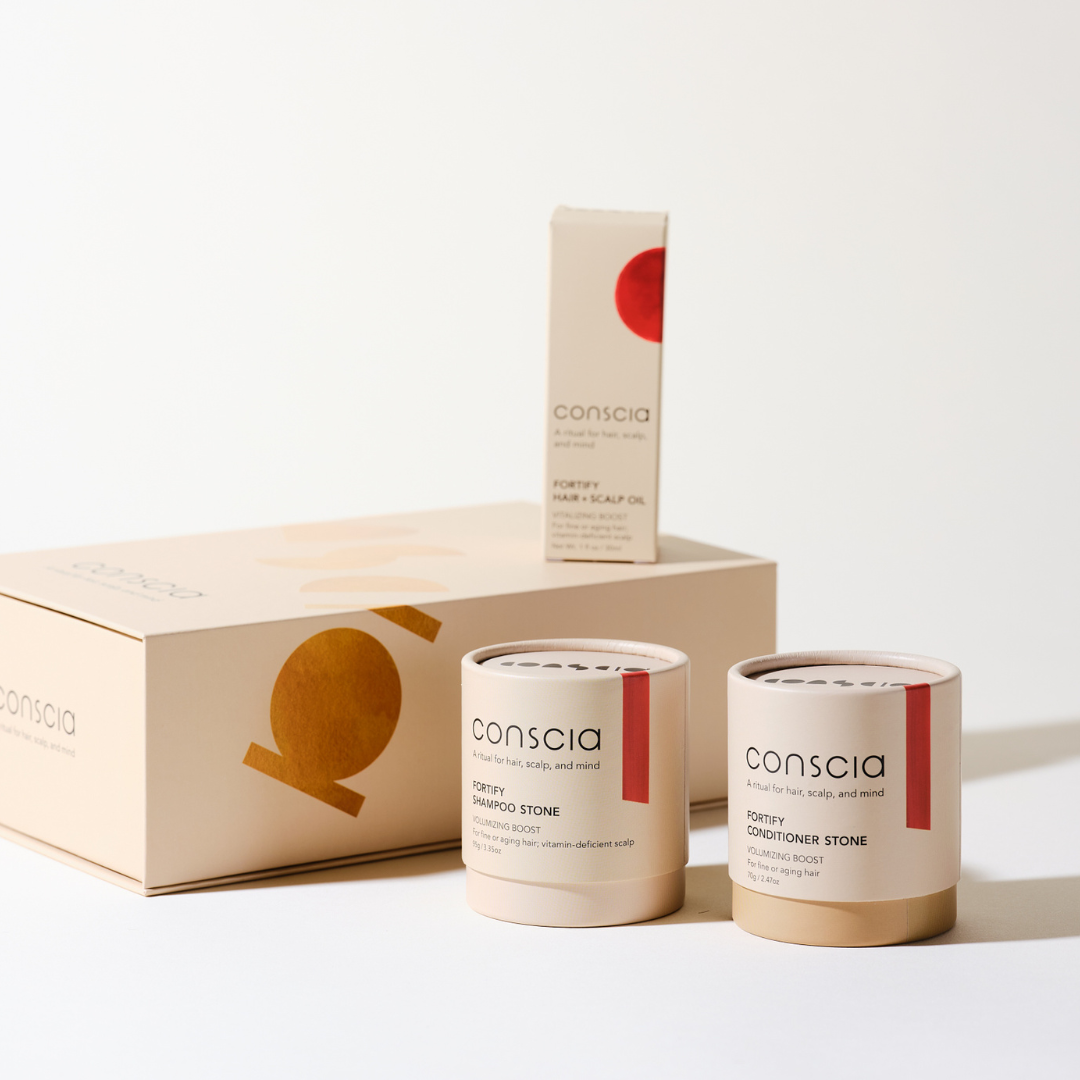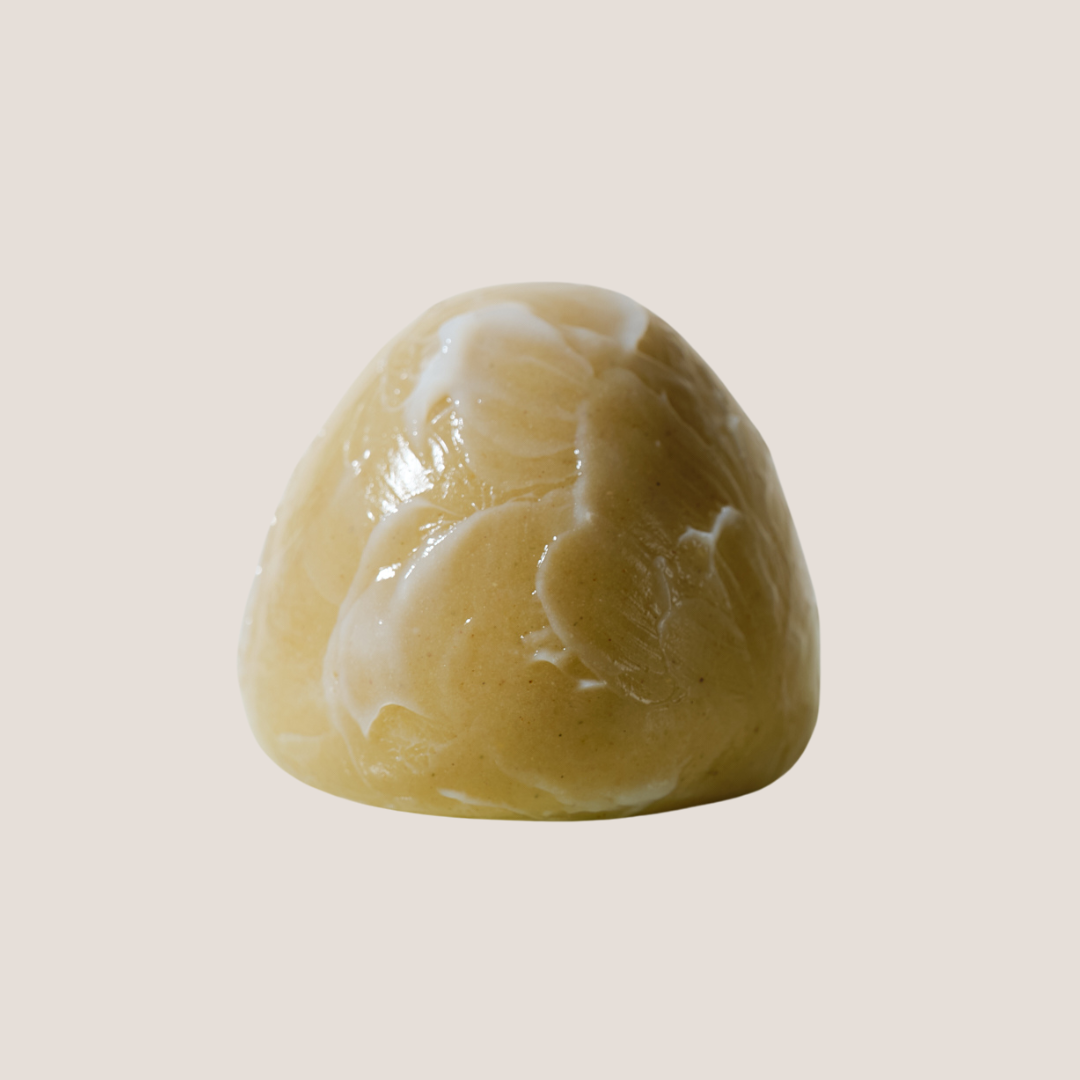
Step 1
Rather than just cleansing, we’re trying to nourish hair and scalp as well. For example, we opted for a natural, olive oil-based alternative to silicones in our formulas to create shine and provide a protective layer to the hair. Rice powder, oat flour and plants extracts replace many surfactants. The stones are essentially concentrates — no added fillers, dyes or fragrances.
The color and scent of each formula comes from the extracts and essential oils used in that formula. Spirulina and moringa give Heal its green tint, while rosehip and pomegranate give Hydrate its rosy color.

Step 2
Maintaining the right consistency while mixing, heating and molding is crucial to getting the stones formed, and it took a while to nail it. A Portland chef friend helped me figure out in what order to add the ingredients—basically, following the techniques of baking. We thought of it like truffles or cookies.
As we grew production, we increased the scale of our machinery in our Portland garage-turned-lab. Now we have an industrial kitchen, a stove, a floor-size mixer, rows of powders in glass jars on shelves, cooling trays on baking racks, beakers, scales, etc. Our small team is all hands on deck, from making to packaging to shipping.



Step 3 and 4
For the shampoos, we blend the powder, add the heated oils and butters, and mix it all together. We then take out the batter, roll it into individual balls using a scale to measure consistently, and put the balls into custom mold trays that are pressed to form the shape of our stones.
Once the shampoos were perfected, I moved onto conditioners. The process is different for this, as we hot pour the mixture directly into silicone molds. There are no surfactants in these formulas, just conditioning agents—butters, oils and extracts, and green chemistry ingredients. The molds rest for a day, then we pop them out and clean them up.
Step 5
The last step with both shampoos and conditioners is hand-carving the stones to give them their smooth rounded shape. I use pottery carving tools to scrape away any excess material and to perfect the form. Each stone is handled individually, like a potter does with ceramics. Super satisfying! At this point, they are ready to be packaged up.
“The future of hair depends on us thinking outside the plastic bottle.” — Nicole Brown,
Conscia Co-Founder





























